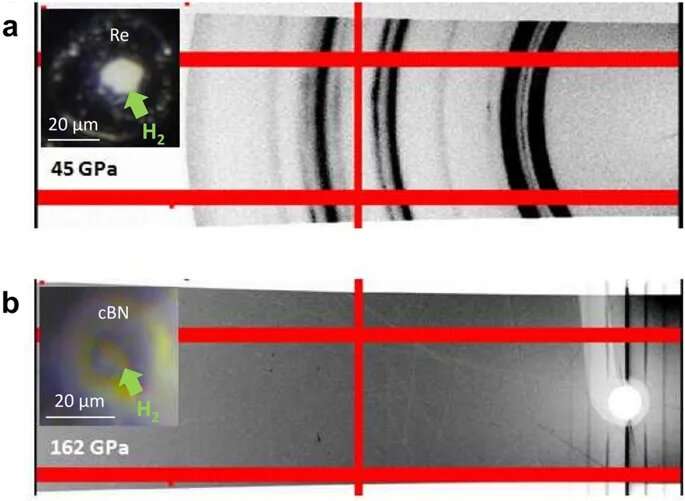High pressure electronic transitions a pathway to high-temperature superconductivity in hydrogen

An international experimental research team led by Professor Ho-Kwang Mao and Dr. Cheng Ji from HPSTAR, China and a theory team led by Professor Rajeev Ahuja, Uppsala University, have used experimental research as well as theory to understand high-pressure structural phase transitions in hydrogen which could give rise to metallization and could even result in superconductivity. The findings were published this week in the online edition of Nature.
Hydrogen (H2) is one of the most abundant and lightest elements in the universe, and there has been speculation for sixty years that metallization of pure hydrogen could lead to room-temperature superconductivity, though this has remained an open question till now. However, enormous pressure would be required to compress hydrogen sufficiently to achieve this metallic state. With relentless experimental efforts over the past three decades, solid H2 has been compressed up to pressures close to 400 GPa (about the pressure at the center of the Earth), and six high-pressure molecular phases above 100 GPa have been identified on the basis of spectroscopic observations without adequate structural constraints.
Through new technical development tailored for ultrahigh-pressure hydrogen, we finally obtained X-ray diffraction (XRD) data of hydrogen phases I, III and IV up to 254 GPa. Surprisingly, these phases do not exhibit different crystal symmetries, but all remain in the hexagonal close packed (hcp) structure with drastic reduction of the c/a axial ratio relative to the ideal hcp lattice. Our study suggests that massive distortion of the hcp Brillouin zone leads to a series of electronic topological transition (ETT) phases prior to the hydrogen band closure. It is the first time this has been seen for hydrogen.
This prompted the team led by Professor Rajeev Ahuja to carry out systematic computer experiments based on state-of-the-art first-principles methods to study ETT. The findings are in excellent agreement with experimental observations and even allowed for the prediction that the metallic phase of hydrogen goes via many intermediate ETTs. The extensive simulations were performed using resources provided by the Swedish National Infrastructure for Computing (SNIC) at NSC.
"ETT in hydrogen represents an extraordinarily important discovery," says Professor Ahuja. "Our results can be seen to represent an important advancement in the experimental and theoretical search for metallic and even superconducting hydrogen within a tractable pressure regime."
More information: Cheng Ji et al. Ultrahigh-pressure isostructural electronic transitions in hydrogen, Nature (2019). DOI: 10.1038/s41586-019-1565-9
Journal information: Nature
Provided by Uppsala University





















